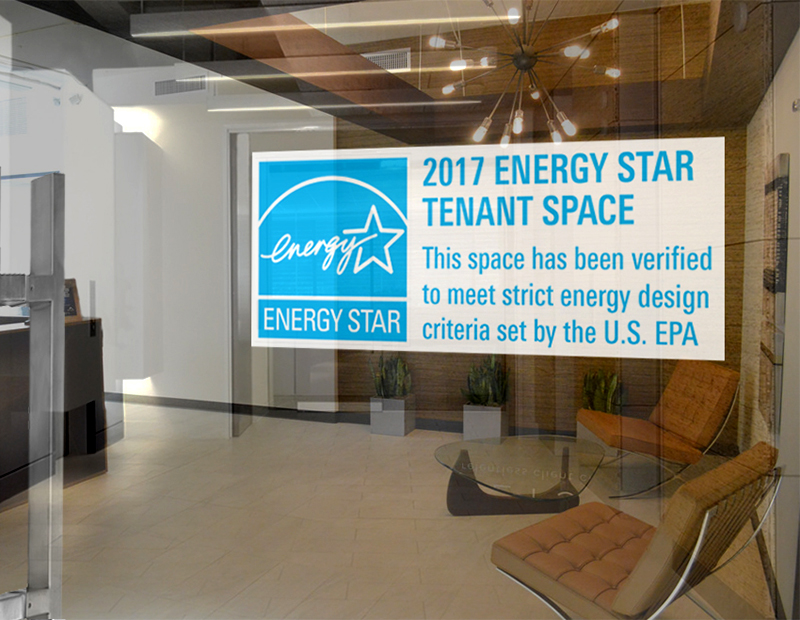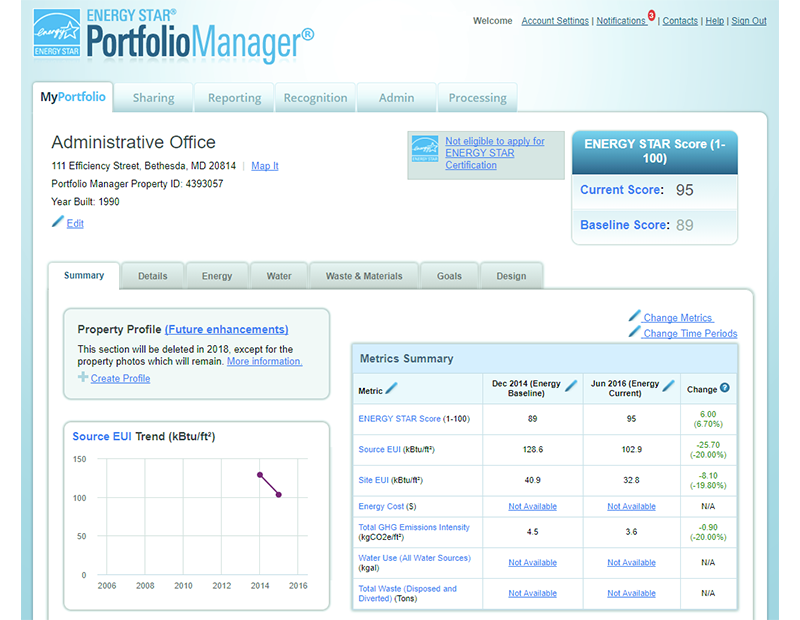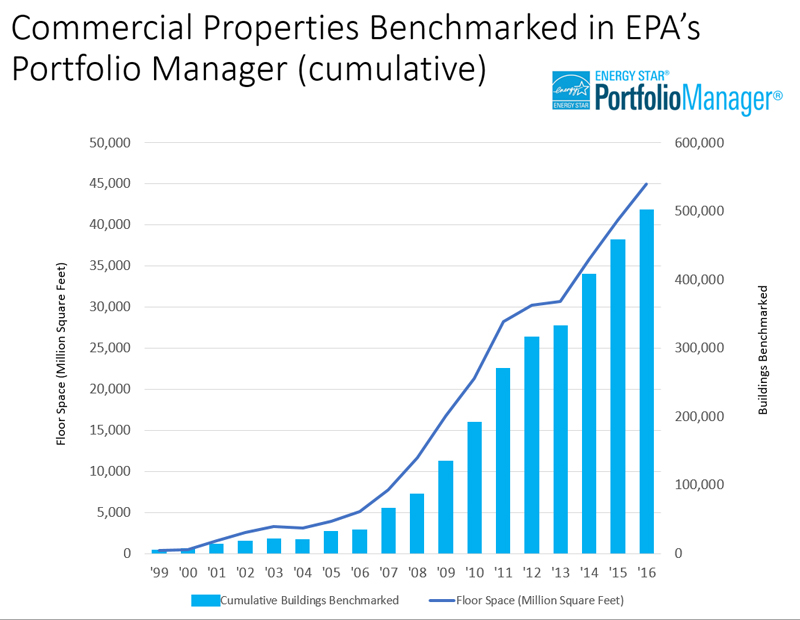Are You Ready for ENERGY STAR® 2.0?
With changes to ENERGY STAR® for commercial buildings fast approaching, here’s how to make sure your property meets the higher bar.
By Jeffrey Steele
Changes are coming to the ENERGY STAR® Commercial Buildings program late this summer. Standards to qualify for certification will rise, meaning some buildings currently qualifying for certification may not once the bar is raised. The good news is building owners and operators can take steps now to ensure they qualify later.
ENERGY STAR® scores are based on Commercial Buildings Energy Consumption Surveys (CBECS) taken of randomly-selected buildings nationwide. The survey upon which current scores are based was conducted in 2003. The scoring will be updated in August, based on a far more recent 2012 survey. “Everyone’s score is going to change,” said Michael Zatz, manager, ENERGY STAR® Commercial Buildings with the U.S. Environmental Protection Agency in Washington. D.C. “From 2003 to 2012, commercial buildings did improve in their energy efficiency. So the bar has to get higher.”
Building owners are undertaking changes in order to gain the traditional qualifying score of 75 in the revised scoring system, said Cliff Majersik, executive director of the Institute for Market Transformation (IMT), a Washington, D.C. non-profit organization focused on energy efficient buildings. “Most of their strategies aren’t new to the world, but are new to many building owners,” he said. “It’s things like operating set points, to make sure you’re not heating and cooling buildings when they’re empty, training cleaning personnel to turn off lights, doing building tune-ups to ensure equipment is running properly, calibrating thermostats, replacing energy inefficient lighting, improving lighting controls, installing occupancy sensors and controls to turn off lights centrally, using ENERGY STAR® office equipment and incorporating energy management information systems to monitor buildings and detect whether systems are running properly or are experiencing aberrations.”
IMT offers a primer on how to best select energy management systems. Visit https://www.imt.org/resources/detail/energy-management-information-system-questionnaire.
But Zatz emphasizes improvements can be reaped in most buildings through no-cost and low-cost operations and behavior changes, which should be explored first.
 Building owners and operators can also look to ENERGY STAR® partners for help. “You’re going to be graded on a harder curve,” said Jon Moeller, CEO for San Francisco-based Mach Energy, an ENERGY STAR® partner helping building owners improve their scores. “We look at Smart Meter data, analyzing it and identifying saving opportunities or ENERGY STAR®-enhancing opportunities . . . generally, the lower the energy use, the higher the score.”
Building owners and operators can also look to ENERGY STAR® partners for help. “You’re going to be graded on a harder curve,” said Jon Moeller, CEO for San Francisco-based Mach Energy, an ENERGY STAR® partner helping building owners improve their scores. “We look at Smart Meter data, analyzing it and identifying saving opportunities or ENERGY STAR®-enhancing opportunities . . . generally, the lower the energy use, the higher the score.”
The EPA is encouraging building owners to apply for ENERGY STAR® certification before the release of the new scores, Zatz said. “If you’re thinking about it, better to do it now and don’t wait,” he added. “And if you want a record of your old score, print it out or save it to your computer. Make sure you document it, because we will not have it after the change.”
Using ENERGY STAR®’s Portfolio Manager to benchmark energy has become industry standard, said John Bryant, vice president of advocacy for BOMA International. “BOMA is leveraging Portfolio Manager as the utility calculations tool for our just-launched W2 Challenge, which is a two-year initiative encouraging commercial buildings to benchmark water consumption and waste output and improve performance,” he said. “More than 1,700 buildings have signed on to the challenge to date, and, working with ENERGY STAR®, we believe the W2 Challenge will elevate commercial real estate sustainability efforts to the next level.”
Energy Star for Tenants
Originally known as Tenant Star, the ENERGY STAR® for Tenants program allows tenants to be ENERGY STAR® certified just as buildings have been. “We launched the pilot last summer, and had a phenomenal response,” Zatz said, noting the agency had expected about 30 tenants to participate, but found about 100 wanted to take part. They represent many kinds of tenants, from law firms to financial firms, nationwide.
“They’ve been working through a series of [EPA] webinars and other communications, which help them understand the five technical criteria. They’ve been providing us with feedback on what’s difficult and easy, what does and doesn’t work. We’ll do our last follow-up with them in the spring, and we will modify the program based on the input with the hope of rolling it out to the entire office tenant market in 2018.”
Once this initiative has been launched, he added, the agency will begin investigating the possibility of expanding the program to also include retail and warehouse tenancy.
Highly esteemed
ENERGY STAR® now has more than 500,000 properties measuring, tracking and reporting on their energy water and waste, Zatz said. Nearing 2017 certification finalization, it appears more than 9,500 ENERGY STAR® certifications were awarded in the year concluded. By contrast, 2016 saw 7,500 certifications. In the previous high year, 8,200 certifications were bestowed.
As these numbers suggest, ENERGY STAR® Commercial Buildings is hugely popular. “You can see it in the tens of thousands of buildings using it as a tool to save themselves money,” Majersik said. “It’s saving billions of dollars a year. The fact that it’s now being expanded from energy to also incorporate water and waste savings only extends its value. It’s beloved by building owners. And it’s driving demand on the part of building owners for products and services to help improve the efficiency of their buildings.”
Moeller emphasizes the bottom line. “ENERGY STAR® has kept the costs low,” he said. “Getting certified is a modest expense, and well worth it given studies showing ENERGY STAR® commercial space is definitely in greater demand and can lead to higher building value.”
You’ll find more on this topic in the March 2018 issue of CPE.











You must be logged in to post a comment.